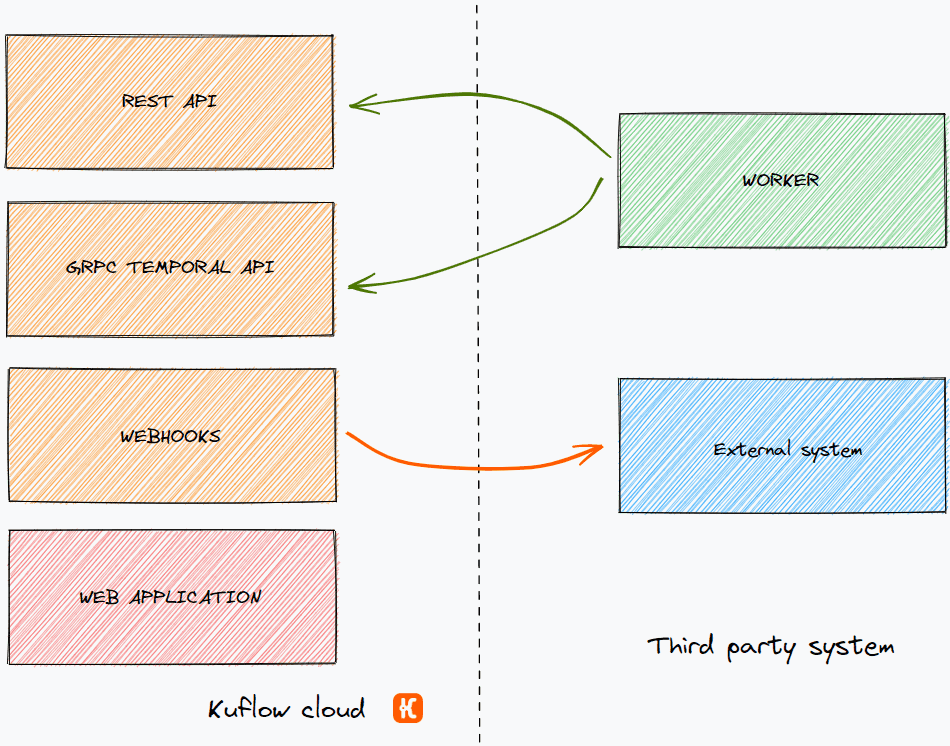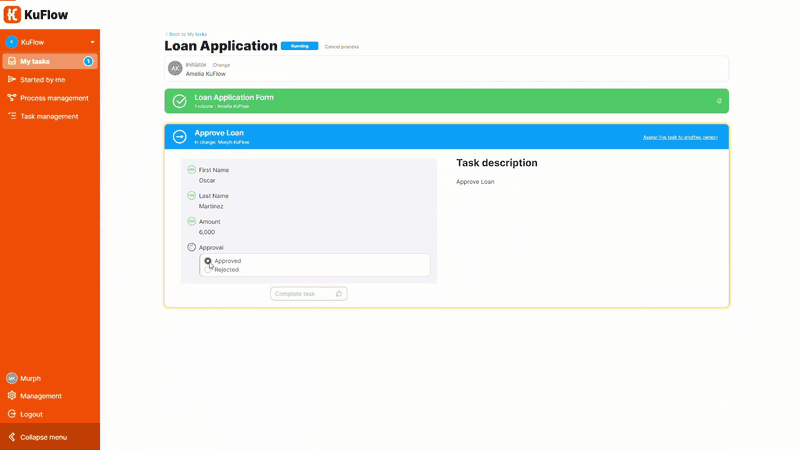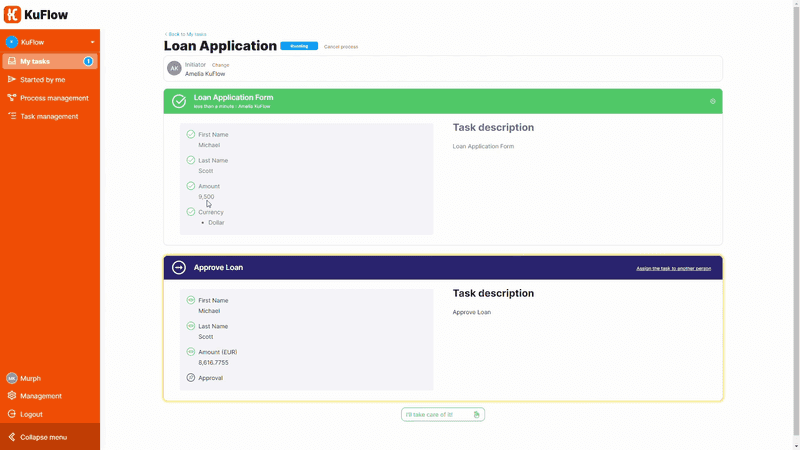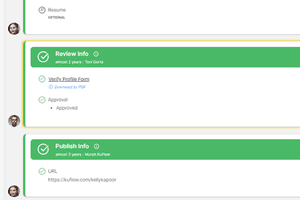What *exactly* is KuFlow?
Published 26-05-2022 by Carlos Peña

Credits: KuFlow
Many people have approached me in the last few weeks asking what exactly KuFlow is. When I tell them that it is a platform that helps automate processes and tasks in their companies, they look at me as if I hadn't told them anything. So I will try to explain it in a simple way.
KuFlow allows you to design your processes as a set of human tasks. Human tasks are actions that a person has to do. In order to achieve this, KuFlow provides them with a User Interface where they can consult all the information they need to carry out the task, and where they can inform the system of all the necessary data so that the process continues.
To show the capabilities of KuFlow, we are going to comment on the Loan Request example described here.
Let's suppose you are the person who is in charge of reviewing and approving a loan. In order to do that task, you need to know all the relevant information:
- In KuFlow you would access “Your tasks”, you would select the “Approve Loan” task from one of the processes and KuFlow would show you who has requested the loan and the amount they have asked for.

- In the same interface, you would indicate if you give the authorization and what amount you approve.
- Subsequently, and following the guidelines of how the process has been designed, the applicant will be notified, through a task, that their loan has been granted and what is the authorized amount.
So far we have discussed what you can do if KuFlow only coordinates human tasks.
But our vision is to be a platform that allows you to automate any process or task. Therefore, KuFlow also allows you to define automatic tasks (we call them activities) that consist of interacting with other applications. And there we enter the world of integrations and distributed systems.

Each company will need very specific integrations based on their application ecosystem. This is where the IT department comes in, as it will need to develop a specific worker for the integration it needs. A worker is nothing more than a small piece of software that is responsible for being aware of when an activity must be carried out and interacting with the precise information system to carry out the intended objective.
In our example, since the loan application can be requested in different currencies, it is necessary for the process to call an activity to change the currency. For this, a worker has been developed that is attentive to any process that requires currency exchange and calls an external API to carry out the task.

Workers can be of any nature. For example, if there is no API for currency exchange, a robot (RPA) can be developed to do this job. In fact, we have developed a library in RobotFramework to facilitate the creation of robots that integrate with KuFlow. But we will explain that in another post.
In short, KuFlow allows the processes of your company to be defined, for people to interact with those processes and for the processes to make use of other information systems to achieve the desired objectives.
And what exactly does KuFlow provide?
- A User Interface to comfortably define the processes of your company.
- A User Interface for people to carry out their tasks and interact with the processes.
- A fine-grained authorization system, so people can only see the tasks they have permissions for.
- A platform for processes to integrate with other systems and to do so in a secure and robust way.
- A tool so you can govern and make your company's processes visible.
Do you still have doubts about whether KuFlow can help you? We are here to solve any question you have. Get in touch with us and we'll help you see if KuFlow is what you need.





